
Abbeville, SC
Fellow explorer and photographer Alan Russell has been working on family research. His great-great grandfather was none other than David Wyatt Aiken, a prominent figure in 19th century politics in South Carolina. Aiken served as an officer in the Confederate Army, and served five terms as a US Congressman.
Alan has been working with Aiken’s diary, and has been compiling a list of locations that Aiken mentions. This particular Saturday, Alan had a list of locations in and around the town of Abbeville, so we decided to check them out. Along the way we talked with some interesting folks, and even had a chat with the mayor of the town.
Our first stop was Upper Long Cane Presbyterian Church. I had passed by the cemetery many times on my way into Abbeville, but had never stopped by. The cemetery is quite large, and features many signature stones. In addition to those by W. T. White, R. D. White, Walker, and Rowe and White there were some I had not seen before. There were several by a Chalmers and one by Bonne & Sprout.
It’s interesting to see the age of the stone and associate it with a particular stone carver. The W. T. White stones are from just around the Civil War era. The Rowe and White are much earlier. The Walker and Hall stones are from the early 19th century. Here are two examples, first from J. Hall. Notice the florid style of carving:
This one is from R. White, with one of the most elaborate stonemason signatures I’ve every seen. Talk about advertising!
There were some very old hand-carved field stones. There were also some interesting epitaphs, and lots of Civil War and Revolutionary War veterans.
We took lots more photos than what I have posted here. The cemetery seems to be active, but we stayed in the older sections. One thing I forgot to mention was that it was blistering cold. The wind was up, and Alan and I were bundled up as much as we could be. Despite the weather, we spent a lot of time in the cemetery. Upper Long Cane Cemetery is on the National Register of Historic Places.
Just down the road is the Upper Long Cane Presbyterian Church. It was the church, and not the cemetery that was mentioned in the Aiken diary, so we felt like we had to stop. Even though the church has the brick Greek Revival style typical of many 20th century Baptist Churches, this church seemed older upon inspection. The church is the oldest in Abbeville County, established in 1763. However, I couldn’t find out when the current building was built.
We headed on into town and parked on the square. From there we started exploring on foot. First we headed north, aiming for the Burt-Stark House. There were some interesting stores along this part of the square, including one specializing in Southern Culture. A sign on the door admonished all to honor Robert E. Lee on his birthday. There were, of course, lots of rebels flags. Stands to reason that this would be here. Abbeville is considered to be the heart of secession for the state. A store across the road had an unusual hole that was completely wrapped in aluminum foil for some reason.
We paused to take photos of the Abbeville Presbyterian Church, and the Catholic Church across the street.
On one of the side streets we spotted an old caboose, and had to check it out.
The McGowan-Barksdale-Bundy House looked fascinating. We saw that it would be open for tours starting at 1:00, and thought about coming back by. Apparently the caboose was in the historic house’s back yard.
Next up was First Baptist Church…
…and across from that was the Burt-Stark House, which was mentioned in the Aiken diary. This was the house were Lee stayed after the surrender at Appomattox, and where he declared that the Confederacy was dissolved. A sign said that the house was closed for the month of January, and it look like renovations were underway.
In front of the house was a cannon and monument commemorating the Confederacy. Alan and I laughed at the fact that the cannon appeared to be aimed at the funeral home across the street.
On down the street was the Methodist Church, also mentioned in the Aiken Diary.
We made our way back to the square. Along the way several architectural details caught our eye.
As we walked along the square a sign advertising old books in the window of an antique shop caught my eye. Thinking there might be some antique hymnals there, we went in. There were no old hymnals, but there was a variety of interesting items.
As we were browsing, the proprietor asked what brought us to town (I guess we were obviously strangers.) I mentioned that we were out doing some family research, and she asked which family. All I had to do was mention Dr. Grady Oliver, and a connection was made. My late Uncle Grady was the town doctor, and was known by everyone in town. The proprietor, Martha Reid said that my father had done the funeral service for both of her parents, and she knew my late brother-in-law, Eddie Taylor, as well. Alan declared that I had won the “Family Connection Game” for this particular outing.
We wandered on down to the Abbeville Court House and adjoining Abbeville Opera House, both of which were in Wyatt Aiken’s diary. Laura and I had been to a performance at the Opera House, but that was years ago. Alan and I walked around to the back of the building. The four-story back wall of the opera house is the largest free-standing brick wall in the state.
Next to the Opera House is the old Belmont Hotel. Alan and I decided that this would be a good place for lunch and to warm up a bit. The hotel and restaurant are operated by a German couple, and the restaurant featured German cuisine. I didn’t seen an bratwurst or sauerkraut on the menu, but they had other German dishes. We both had Reuben sandwiches, which were pretty good. We laughed at the napkins, which were folded in such a way as to make us wonder whether we were supposed to put them in our laps or on our heads.
From the Belmont we continued on around the square, with stops at the old county jail, the Abbeville ARP Church, and the oldest house in Abbeville, right next to that church.
Just up from Abbeville ARP is Trinity Episcopal Church, which was also on Alan’s list of Aiken locations. Both the church and its cemetery are on the National Register of Historic Places. The church was organized in 1842 and the present Gothic Revival style building was constructed in 1860.
It looks like the exterior is in serious need of repairs. A window, or perhaps a panel was wide open on the spire. Bits of pink plaster seemed to be falling from the facade.
I spotted a sign stating that the church was open. Alan tried the front door, found it unlocked, so we went inside. The organist was there practicing, and the rector was discussing something with him. We stood in the middle of the church for a bit admiring the architecture and stained glass windows. The wooden arches reminded me quite a bit of Fourth Presbyterian Church in Greenville.
The rector, Rev. Ken Turner, came over to chat with us. Rev. Turner is 83, and has returned to Trinity as a supply minister. He was in a mood to talk, and gave us lots of history about the stained glass windows and the church in general.
After a pleasant visit, Alan and I left the church and made our way back toward the car. We had a couple of outlying sites to visit, and weren’t sure how many of them we could reach. One must-visit location for Alan was Melrose Cemetery on the north of town on the Greenville Highway. We found it with no problem, and pulled around to find Alan’s family’s plots. The Barnwells and Aikens were clustered together. Yes, Alan’s family is related to the namesakes for those two counties. Alan’s grandparents were buried there, as was Wyatt Aiken, the son of David Wyatt Aiken, who was himself a US Congressman.
There was one surprise in Alan’s family plot…
Wyatt Aiken’s second wife was Adair Taylor, and Thomas Taylor Aiken was their son.
From Melrose we headed back to town. We wanted to find the Trinity Cemetery before it got too late. I had GPS coordinates, and we knew that it was roughly behind the church, but that it was not attached to the church property. We drove around the block and could see the headstones through the trees, but couldn’t find a way in. We spotted one rough road running between a couple of houses that looked like it might lead to it, but I began to second-guess it, and told Alan was should try to find another way in.
We drove on down Bramlett Street and under the railroad trestle where we spotted a crew working on another old cemetery. We didn’t know if this might be part of Trinity, so we turned onto the adjoining street. We could see old headstones completely obscured by trees and brush. The place was completely overgrown, and it looked like the work crew was trying to reclaim the place. We parked and wandered down to where they were working. We figured that if this wasn’t Trinity, then at least they could tell us how to get there.
When we got down to the crew we asked, and found out that the road we had suspected was the correct route. The crew was trying to reclaim the Thompson Cemetery, one that seemed to have been lost in obscurity. One woman with the crew spoke up and introduced herself as Sarah Sherwood, mayor of the town. This would be the second time I’d run into a town mayor on my ramblings.
The work crew was part of a MLK “Day of Service” project. The cemetery had been abandoned, and they were attempting to reclaim it from the underbrush. They were going to work as long as they could today, and bring in more people on Monday.
We were invited to explore the area some more, which we did. There were headstones tucked all in under the brush. I’m sure there were many more graves that were no longer marked. We both got tangled up in briars and vines as we tried to survey the extent of the cemetery.
It’s hard to figure out what happened here. The latest stone I that wasn’t in the already cleared area date back only to 2001. What happened in the 13 years since then? How does a cemetery with fairly new graves fall into such disrepair? I was very pleased to see the efforts of the mayor and her crew, and I hope they are able to reclaim this spot.
While passing under the railroad trestle to get to Thompson Cemetery, we spotted an old depot. Before heading off to Trinity Cemetery, we decided to check it out. It seemed like it was in an incredibly isolated location. A lone diesel engine was idling next to the old depot.
As it turns out the access road to Trinity Cemetery runs right next to the mayor’s house, so she was able to give us great directions. The road was rough, but the Subaru did a good job getting us there. The cemetery itself was not large. I think I was expecting something more impressive from one of the largest churches in the town. While there were some cool headstones there, we didn’t see any of the signature stones. I think this was because the church building was consecrated right before the Civil War, and the Whites and other stone masons stopped signing stones at about that time.
Regardless, we strolled around and took some photos. Dogs from the neighboring yards sounded the alarm as we wandered past. Unlike Melrose and Upper Long Cane, this one didn’t appear to be an active cemetery with recent burials.
By this time the afternoon light was waning, and it was time to head back home. Along the way we briefly stopped in Hodges to get a shot of the white framed Presbyterian church there. The tall tower appeared to be leaning a bit. Unfortunately, the lighting was bad, but we did get a few shots.
There were several other locations on Alan’s list, but they would have to wait until the next adventure. Here’s a map showing those locations, including the ones we didn’t visit…
View Abbeville Ramble in a larger map
…and here is a slide show with all of the photos that we took on that trip:
[fsg_gallery id=”34″]
Alan’s excellent photos can be seen at this link.











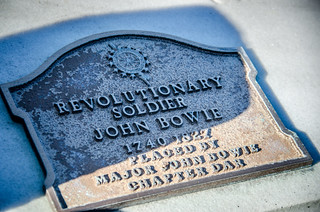


















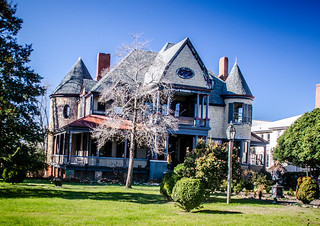








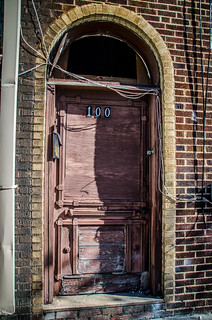



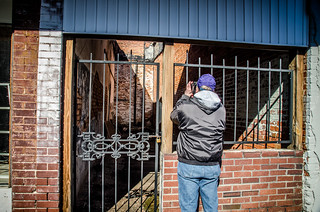


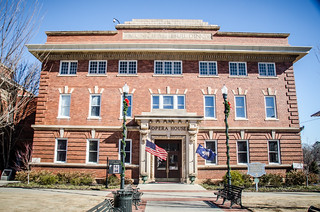



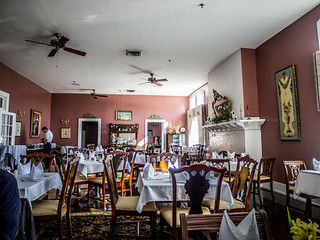




















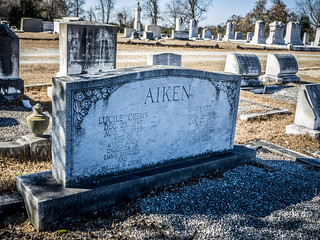





















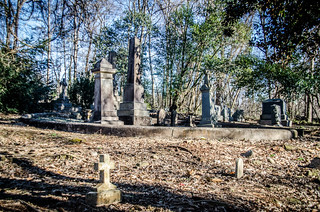





In spite of the cold, it was a fine day. Thanks!
Thanks for coming up with the idea! I think we need to go check out some of those other locations.
Trinity in Abbeville looks gorgeous! Did you all get to go inside?
I am a professional genealogist donating my time to the National Grange in an effort to locate living descendants of the early pioneers of the Grange. The reason is that the organization is celebrating its 150th anniversary next year and wants to invite these descendants to honor their ancestor. Your great-great grandfather, Col. D. Wyatt AIKEN, was one of these people. I need to get your exact connection to the family. If you already have the descendants, it would save me lots of time. Contact me at: E: Roushhistorian@yahoo.com or call 740-992-7874
This site is priceless. Thank you for the history and beautiful photography. My name is Paul Russell. I have been researching the family of David Russell, my great-great-grandfather who was born in 1793 in Abbeville and died in 1856. He is interred at the Little Mountain Cemetery on highway 28 northwest of Abbeville. After his death, much of his family moved to Hinds County, MS, but I would appreciate any information about David’s parents or history of the Russells in Abbeville in the 1700 and 1800s. Thanks again!